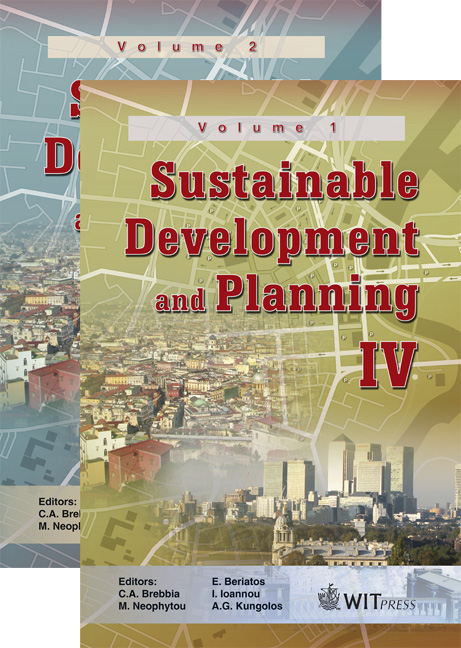Rural Areas, High-speed Train Accessibility And Sustainable Development
Price
Free (open access)
Transaction
Volume
120
Pages
11
Page Range
375 - 385
Published
2009
Size
255 kb
Paper DOI
10.2495/SDP090361
Copyright
WIT Press
Author(s)
C. Ribalaygua & A. de Meer
Abstract
This paper analyzes the key steps in the reorganization of demand-responsive transport systems in rural areas with low population density, and their connection with the high-speed railway network. The deficiencies of public transport in sparsely populated rural areas means that captive users of public transport avoid trips, or even that they move to live near more accessible places, with the consequential abandonment of the poorly served areas towards urban centres where accessibility is not a problem. On the other hand, those who can use private vehicles are forced to do so, consequentially giving up using public transport altogether and thus reducing demand for this type of transport, which increases the environmental impact caused by the private vehicles. To confront these difficulties, demand-responsive transport systems came into use, responding to the needs of low density territories. The study carried out analyses of the territorial experiences of demand-responsive systems and their implications. Results obtained in this investigation, regarding the definition of potential users, the confluence of diverse types of travellers and merchandise and the support points of compatible attraction of activity with the station, among others, are reviewed in this paper. The experience analyzed in the study cases demonstrates the suitability of this type of system as an alternative to regular transport, contributing to a sustainable use of the territory and public services, among which high-speed railway stations are very significant Keywords: demand-responsive system, high-speed railway, low-density territories, strategies, transport effects.
Keywords
demand-responsive system, high-speed railway, low-densityterritories, strategies, transport effects.





